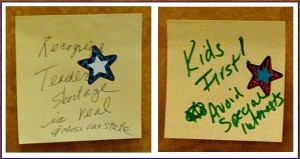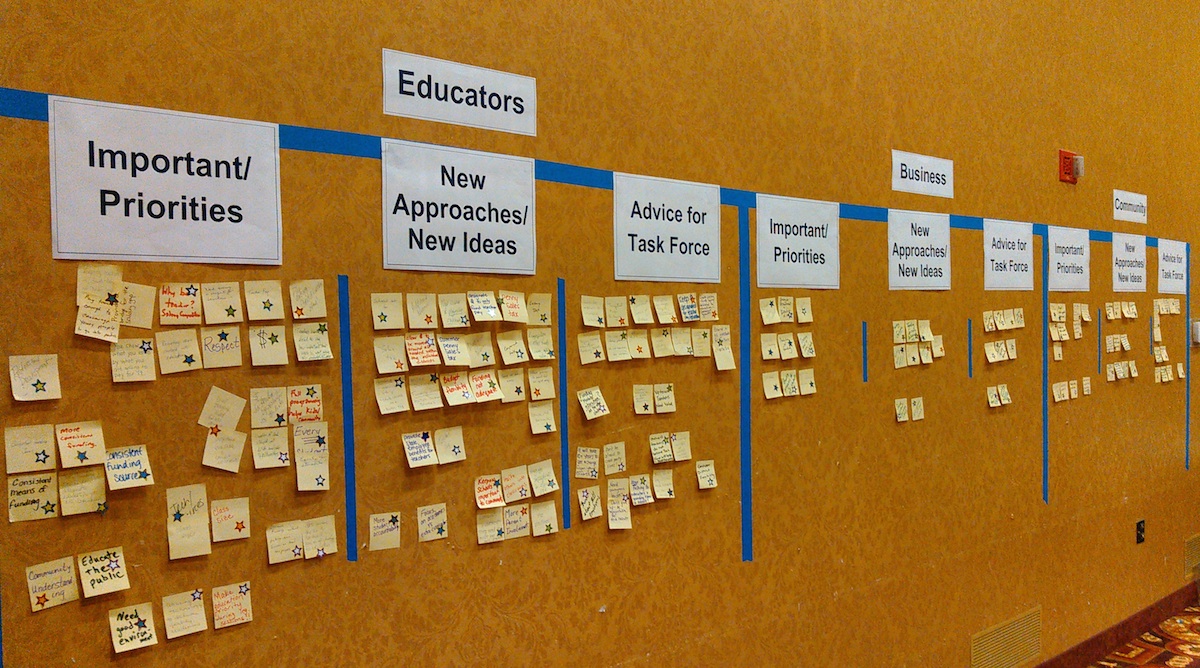The Blue Ribbon Task Force on Teachers and Students wrapped up its information-gathering sessions here in Aberdeen Tuesday. I attended all three sessions and found there were more empty tables than full.
Educators provided the best turnout: I counted 42 educators in the room, plus legislators and task force staff. The business and general public sessions later in the day drew far fewer participants: maybe ten for the business meeting, maybe fifteen for the general public session. The business session didn’t even have that many business people:

I didn’t canvass the room, but even this casual identification of participants in the business session shows maybe just five people not directly connected to state government or education. The general public meeting had a similar make-up: each of the three tables I joined included a different school superintendent, and a couple of other teachers were in the room.

I am pleased that teachers and school administrators made an extra effort to fill seats at these discussions of K-12 policy. However, I am concerned that legislators can look at turnout like what we saw in Aberdeen and draw two conclusions that may inhibit seeking serious policy solutions to South Dakota’s teacher shortage:
- The general public didn’t turn out in droves, so they must not think the teacher shortage demands urgent action.
- The input from these sessions was skewed by an over-representation of educators, and they’re just a special interest group, so let’s avoid them and their advice and maintain the status quo.
Opportunities for more public input are far from over. Task force co-chair Rep. Jacqueline Sly (R-33/Rapid City) urged citizens at each session to build relationships with their legislators and let them know what they think of the proposals that evolve from the task force meetings. Friends, neighbors, please do exactly that. Keep an eye on this task force (co-chair Sen. Deb Soholt [R-14/Sioux Falls] says meeting audio will be webcast live, starting July 7), critique their work and their legislation, and let them know that results from this panel matter enough to affect how you vote in 2016.
Update 16:53 CDT: At each session, participants sat in small groups and wrote down their responses to each of three questions on sticky notes. Each group then starred their top three responses for display on the idea wall.

The number of sticky notes represents the relative proportion of attendees at the Educator, Business, and Community sessions.